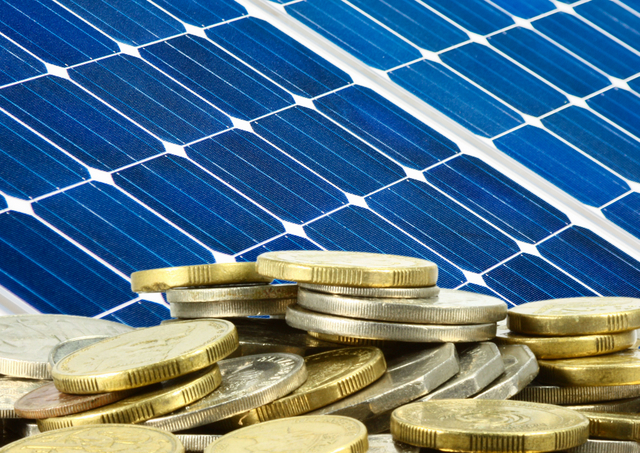It’s been about a month since the #TrumpTariffs officially went into place, and while the long-term economic and pricing implications of the tariff remain to be seen, analysts at IBISWorld say procurement professionals shouldn’t panic since the market’s fundamentals remain favorable for buyers, at least in the short term. IBISWorld employs teams of dedicated expert analysts in the US, UK and Australia who scour economic, demographic and market data, while adding analytical insight that helps organizations of all types make better purchasing decisions. Here’s a look into their thinking.
 Panel prices will still fall
Panel prices will still fall
While the tariff may place upward pressure on solar energy costs, PV panel prices are already falling, so the tax’s impact will be minimized. IBISWorld estimates that the average price of solar panels has been declining at an estimated annualized rate of 3.6% during the past three years, and is forecast to continue falling at an annualized rate of 3.3% in the next three years. While some of this decline is due to the availability of cheap imports, it’s also attributed to technological improvements and more cost-effective and scaled production. Consequently, though this price forecast may change, these factors will continue to keep PV panel prices in check, even as the tariff increases costs.
Moreover, in anticipation of the January decision, foreign suppliers, particularly from China and Mexico, rushed to bring in low-cost solar equipment for US customers toward the end of 2017 to beat the tariff. According to Bloomberg, there’s about five gigawatts of solar equipment already stashed in U.S. warehouses and ports, enough to supply U.S. solar projects for the next six months. This supply glut will help mitigate the impact of the tariff through much of 2018, when the tax will be the highest.
Mitigation through better procurement strategies
Businesses looking to install solar panels will also continue to enjoy tax incentives. Currently, the IRS offers a business investment tax credit equal to 30% of the cost of solar panel installation. Congress passed an extension on these tax credits in December 2015, which makes them available for solar energy systems in operation by the end of 2019. In 2020, the credit will be reduced to 26%, and then to 22% in 2021 before dropping permanently to 10% in 2022.
Procurement professionals can also take steps to insulate themselves from potentially higher prices by carefully considering their “soft costs.” These non-hardware expenses include financing, permitting, installation, taxes, inspection and more. Despite declining solar energy hardware costs, soft costs have largely held steady, and thus account for an increasing proportion of the price of solar power.
One of the best strategies for buyers to reduce soft costs is through scale. Many of these costs do not increase significantly with scale, which means buyers can spread these expenses out with large projects. Buyers should also look for vendors that offer standardized designs. These “plug-and-play” PV panel systems are modular and easy to install, enabling buyers to minimize permitting, inspection and connection costs by utilizing a standard system across all their locations.
Procurement departments can also look to build solar energy systems in states that have taken actions to reduce soft costs. For example, Colorado’s Fair Permit Act caps the fee for commercial permits at $1,000. Five New England states, including Massachusetts, Connecticut, New Hampshire, Vermont and Rhode Island, have joined forces to form the New England Solar Cost-Reduction Partnership. The partnership aims to reduce soft costs through measures such as online permitting and expedited review processes that automatically issue permits after a specified period of time.
Armed with a supply glut of imported PV panels, tax incentives and strategies for reducing soft costs, this tariff doesn’t have to be a death knell for businesses looking to adopt solar panel systems. In particular, the 30% tax credit in operation by the end of 2019 will continue to be a strong incentive for buyers considering solar panel systems.
— Solar Builder magazine


Leave a Reply
You must be logged in to post a comment.